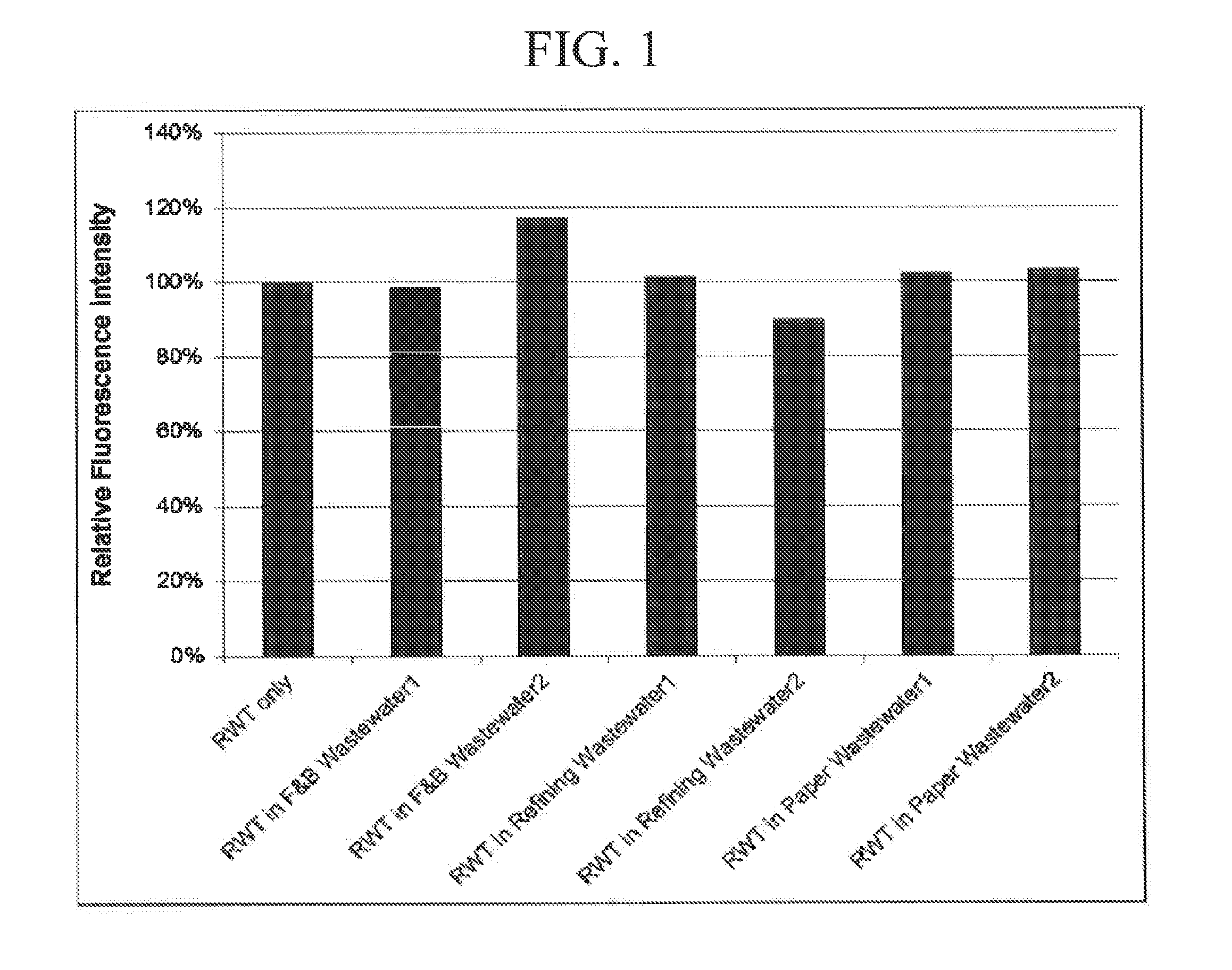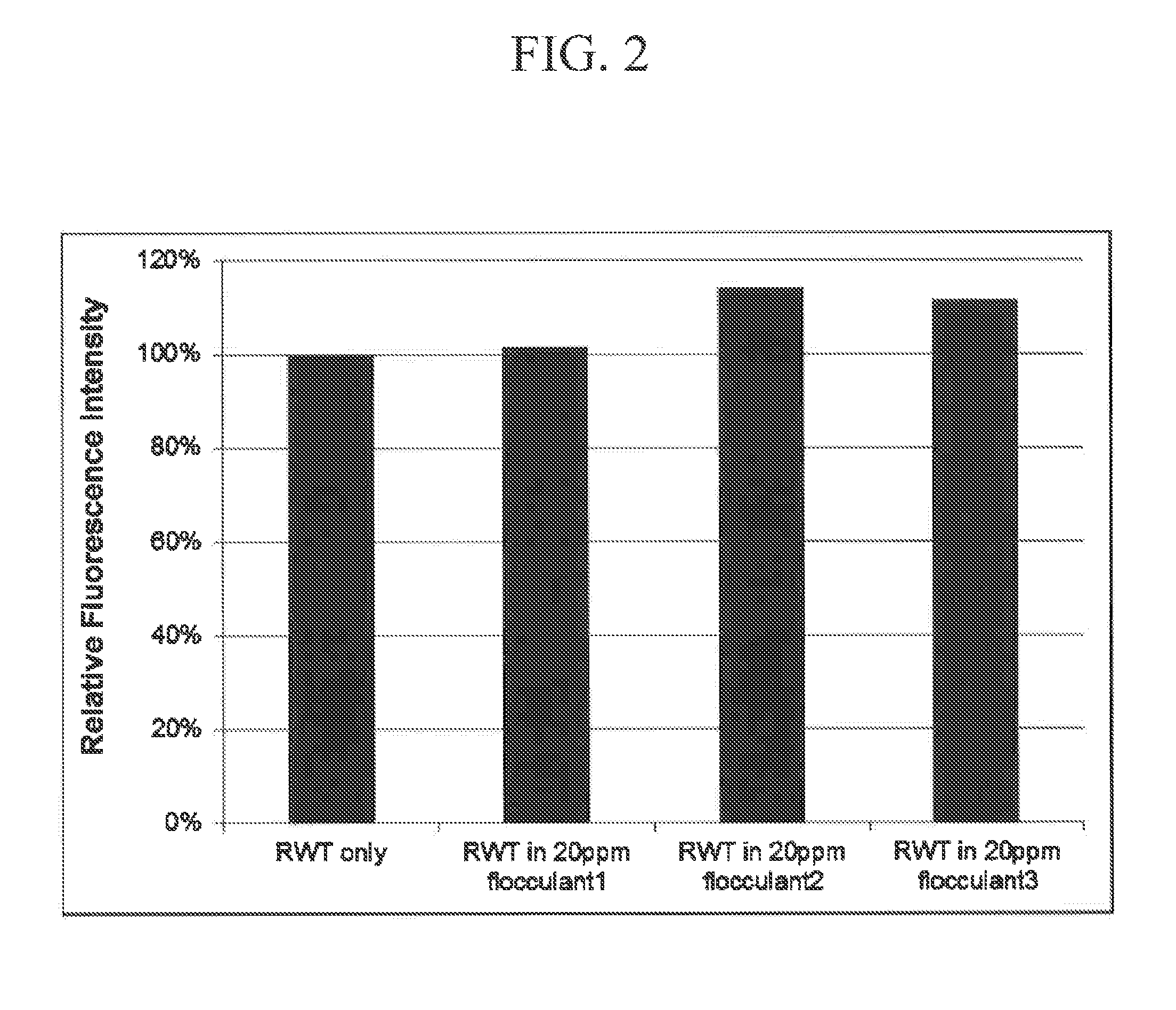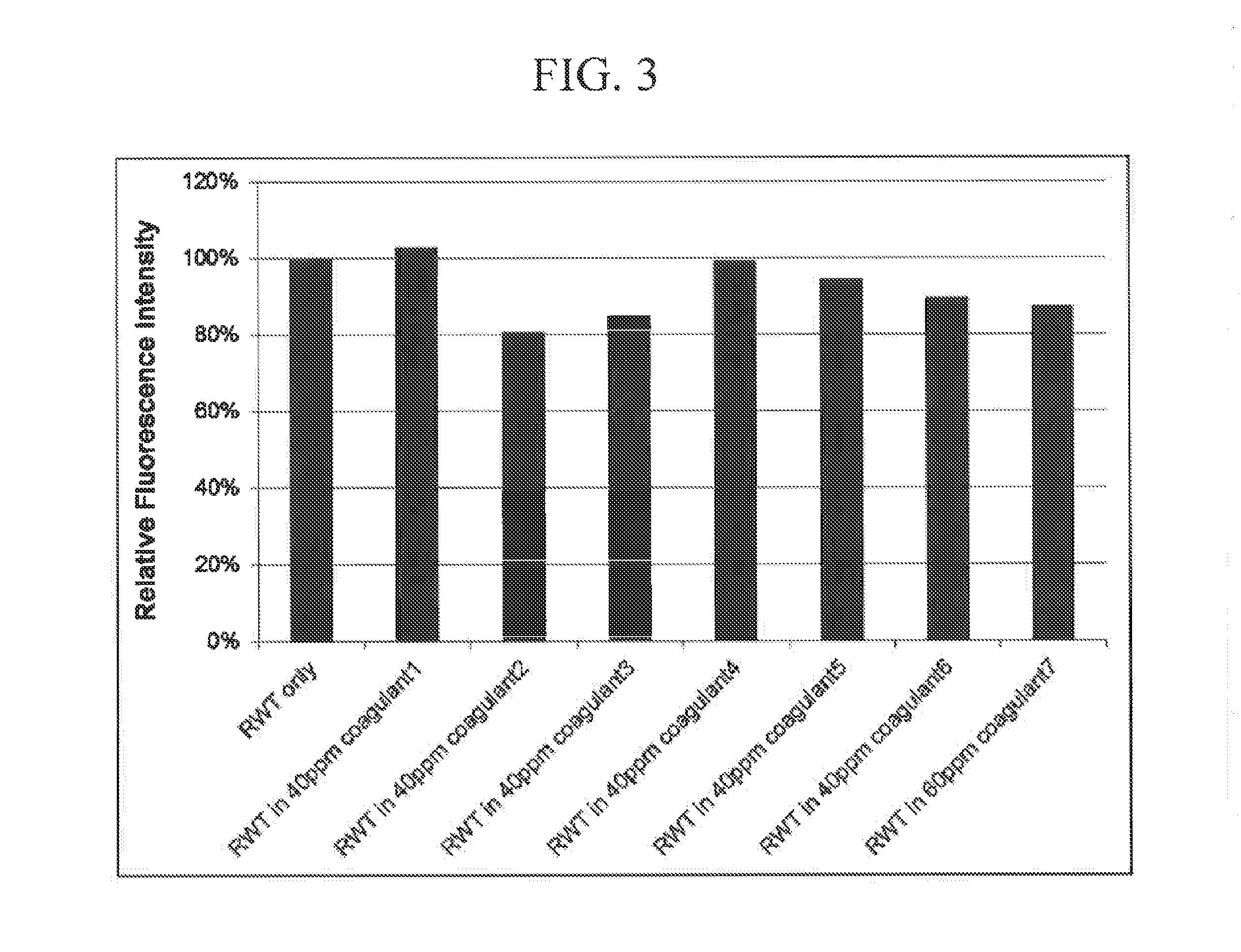Application of fluorescent dyes to trace and quantify chemical dosage in industrial wastewater
a technology of industrial wastewater and fluorescent dyes, applied in the direction of water treatment parameter control, separation process, treatment control/steering, etc., can solve the problems of difficult to find inert dyes, difficult to find fluorescent dyes suitable for inert dyes, and difficult to cost-effectively treat industrial wastewater
- Summary
- Abstract
- Description
- Claims
- Application Information
AI Technical Summary
Benefits of technology
Problems solved by technology
Method used
Image
Examples
examples
[0030]The following experiments were performed obtaining the results illustrated in FIGS. 1-5.
Experimental Procedure:
[0031]The appropriate amount of Rhodamine WT (“RWT”) stock solution was added to deionized water to make a 100 ppb RWT control solution. The results of the control sample can be found throughout the figures.
[0032]The following samples were prepared and tested for fluorescence emission at a controlled concentration of RWT. Once the samples were prepared, the fluorescence emission spectra of each sample was collected at the appropriate excitation wavelength, 510 nm. The final step of the procedure was to calculate the accumulative fluorescence intensity over the emission range.
Samples:
[0033]For wastewater experiments, two types of wastewater were used. Firstly, actual wastewater samples were obtained from paper, food and beverage (“F&B”), and refining industries. Results for these experiments can be found in FIG. 1.
[0034]Secondly, synthetic wastewater samples were made ...
PUM
| Property | Measurement | Unit |
|---|---|---|
| concentration | aaaaa | aaaaa |
| fluorescence | aaaaa | aaaaa |
| inert | aaaaa | aaaaa |
Abstract
Description
Claims
Application Information
 Login to View More
Login to View More - R&D
- Intellectual Property
- Life Sciences
- Materials
- Tech Scout
- Unparalleled Data Quality
- Higher Quality Content
- 60% Fewer Hallucinations
Browse by: Latest US Patents, China's latest patents, Technical Efficacy Thesaurus, Application Domain, Technology Topic, Popular Technical Reports.
© 2025 PatSnap. All rights reserved.Legal|Privacy policy|Modern Slavery Act Transparency Statement|Sitemap|About US| Contact US: help@patsnap.com



